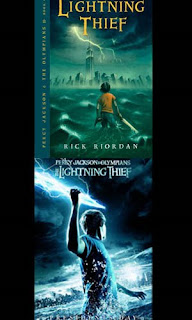
Just after a plane piloted by Capt. Chesly Sullenberger took off from LaGaurdia Airport in New York City on a cold January afternoon in 2009, a number of 6-12 pound projectiles slammed into the plane unexpectedly. These objects tore into the engines and the plane quickly lost thrust. The 6-12 pound projectiles turned out to be a flock of Canadian geese. Without engine power the lives of all 155 passengers on board flight 1549 were in jeopardy. However, due to Capt. Sully’s quick thinking under pressure, all 155 passengers were saved, although they got a little wet. Capt. Sully had saved the day by performing an emergency landing in the Hudson River. The heroic feat will always be referred to as the “miracle on the Hudson.”
In the book, Hero, by Mike Lupica, we learn that fourteen-year-old Zach Harriman’s dad loved to fly. His dad was such a good pilot that he looked forward to bad weather. Bad weather brought out the top form in a good pilot, his dad said. When Capt. Sully had landed the Airbus 320 in the Hudson River that day, Zach’s dad admitted he was a little jealous. He wished he had been the lucky one to make the heroic landing instead of Sully.
"With great power comes great responsibility." Do you remember this line from the Spiderman movie? Zach's dad was his hero. Little did Zach know then, his dad in fact had great power-just not enough to save his own life.
Zach thought about his dad as he walked along the shores of Long Island; he probably wished he had brought with his 1879 Morgan Silver Dollar, a gift from his dad years ago. If he had the coin now he’d probably squeeze it for good luck. He needed luck. He was looking for answers and didn't have much time. He couldn't make himself believe a plane piloted by his dad could ever crash. As he walked by himself around the crash site, how could he prevent the memories of his father from floating to the surface? Why did he come here, the place where his dad’s life met its tragic end? Did he expect his dad to just reappear out of nothing? Would the pain of losing his father ever go away?
Zach traveled to the crash site by himself without permission. As he scanned the area the possibility of finding answers did not look promising. All that remained at the crash site was scorched earth and a hole in the ground. As he kicked the dirt he noticed a flash of light. He lost his breath. He knelt down. There it was, an 1879 Morgan Silver Dollar just like his own. It was similar to the one he kept in his bedroom back at his family’s apartment in New York City. Zach spit on his hand to clean the coin. There was no question in his mind. This was his dad’s good luck charm. His dad had given himself a silver dollar at the same time he had given one to his son on his 8th birthday.
Zach squeezed the coin.
“I’ve been waiting for you,” said a voice behind him.
It wasn’t Zach’s dad. An old man stood near Zach, smiling. He had white hair, a white beard, and wore a bomber jacket. He had been expecting Zach. Behind his smile, the old man held secrets too many for Zach to carry back home to his apartment. Zach wasn't ready yet. Remember, with great power comes great responsibility. Zach would have to be told the enormity of the situation gradually. There were secrets his dad had never told him. Secrets about a magic that passed down from this father to his son.
Mystery, magic, and action all converge to interrupt Zach's charmed life forever. Sometimes you don't choose to be a hero. Sometimes the job chooses you. Find out how in the book, Hero, by Mike Lupica.





























